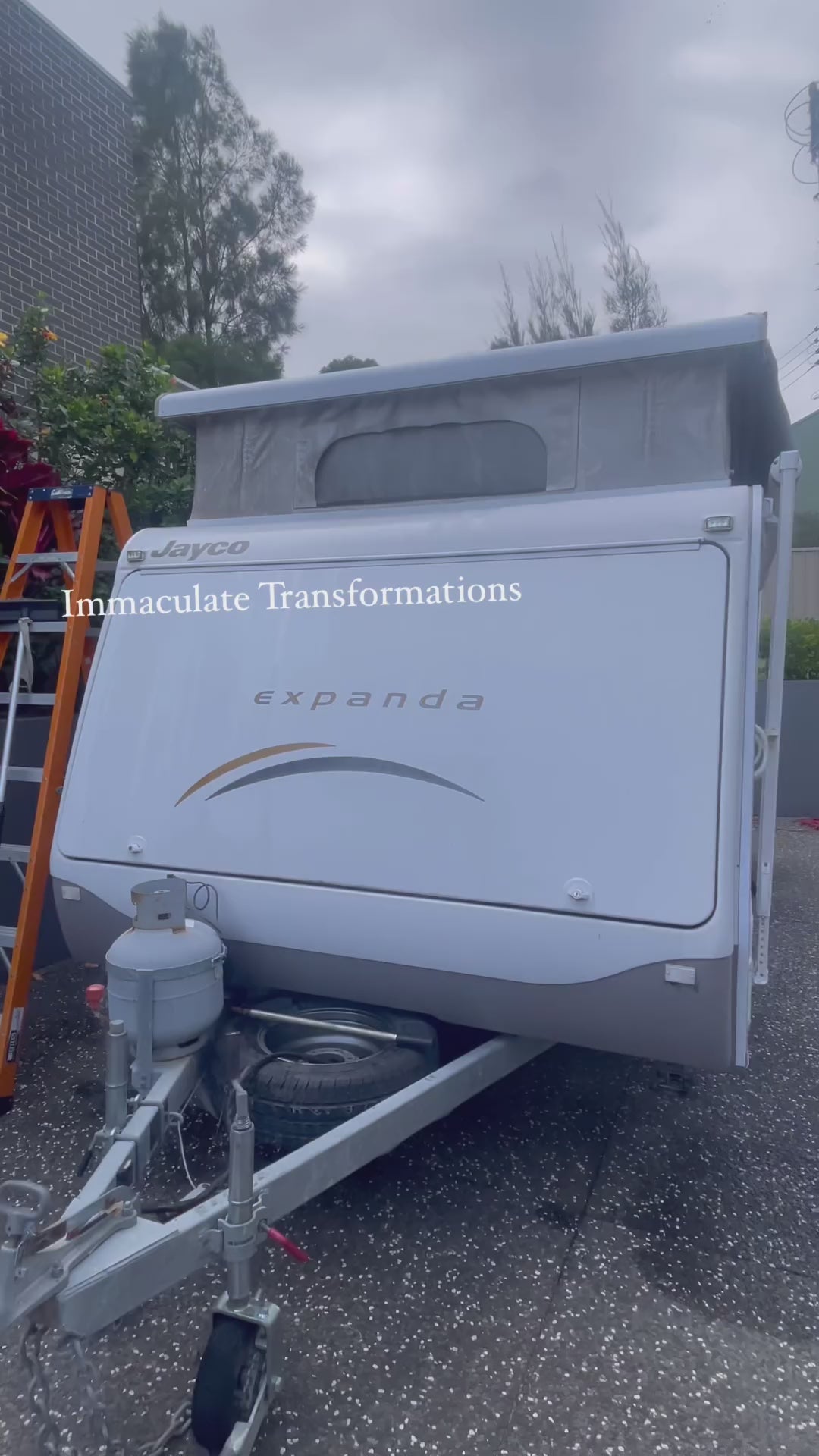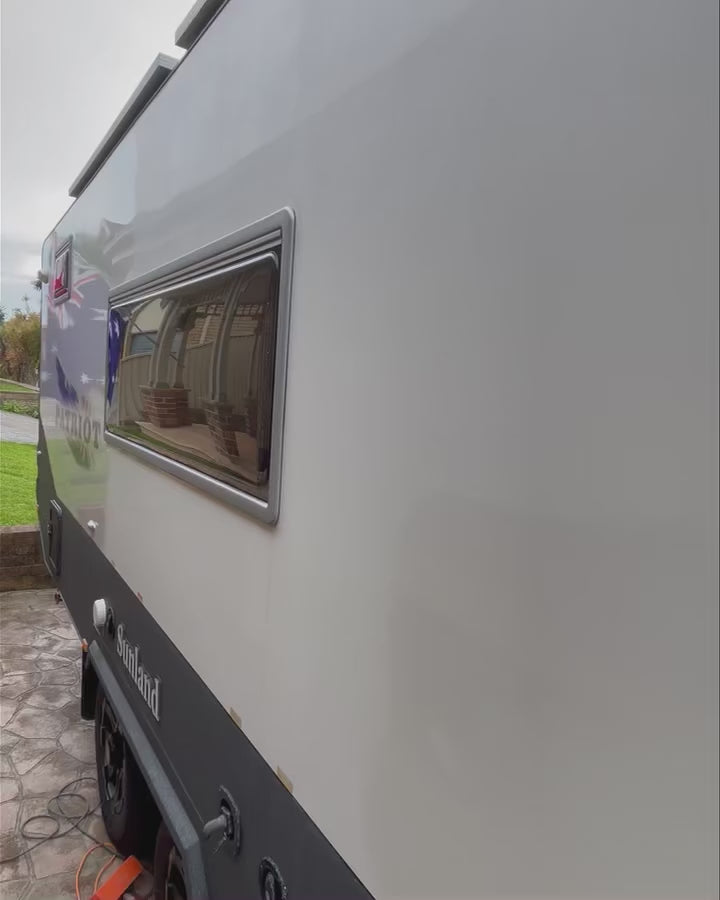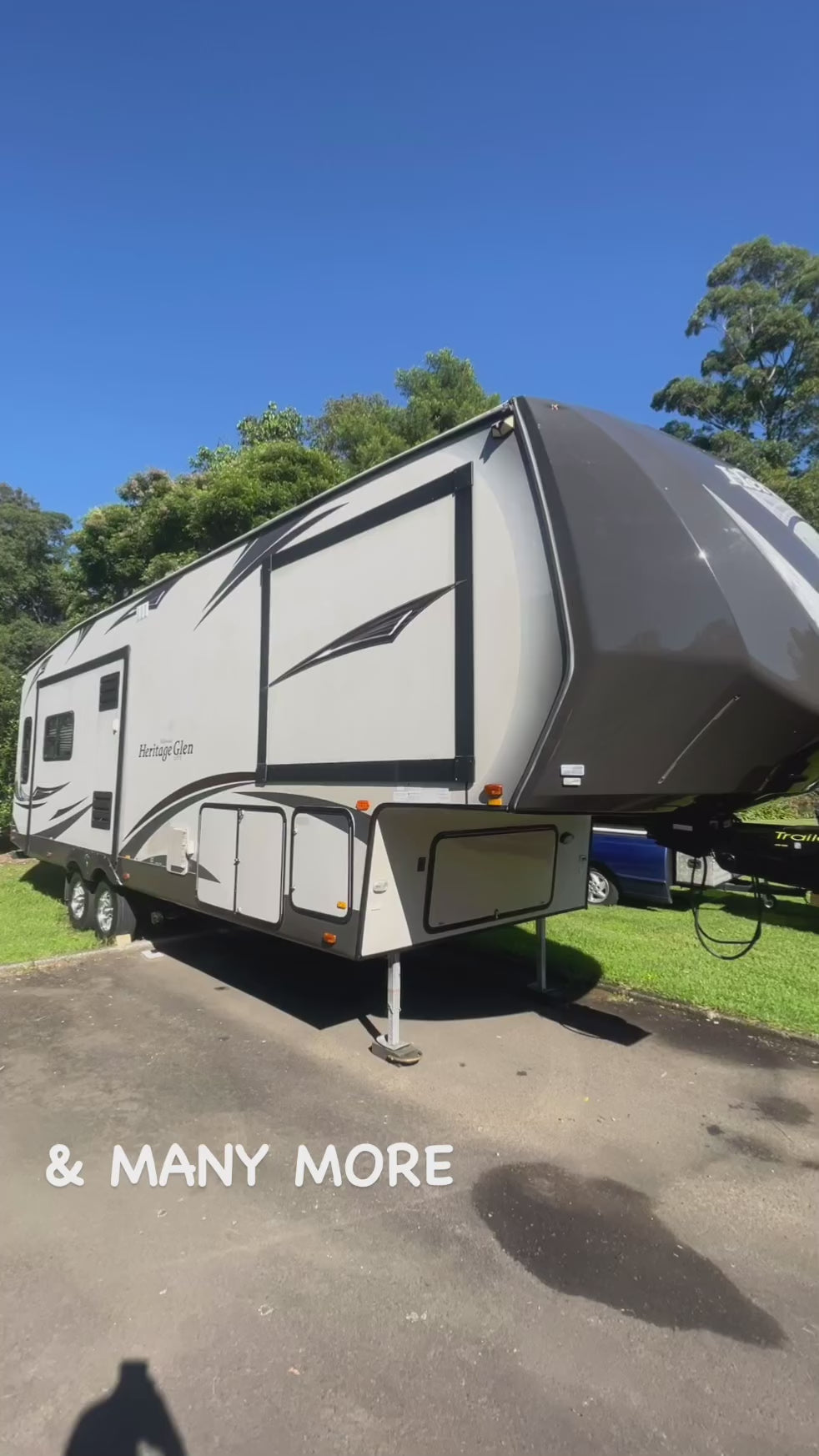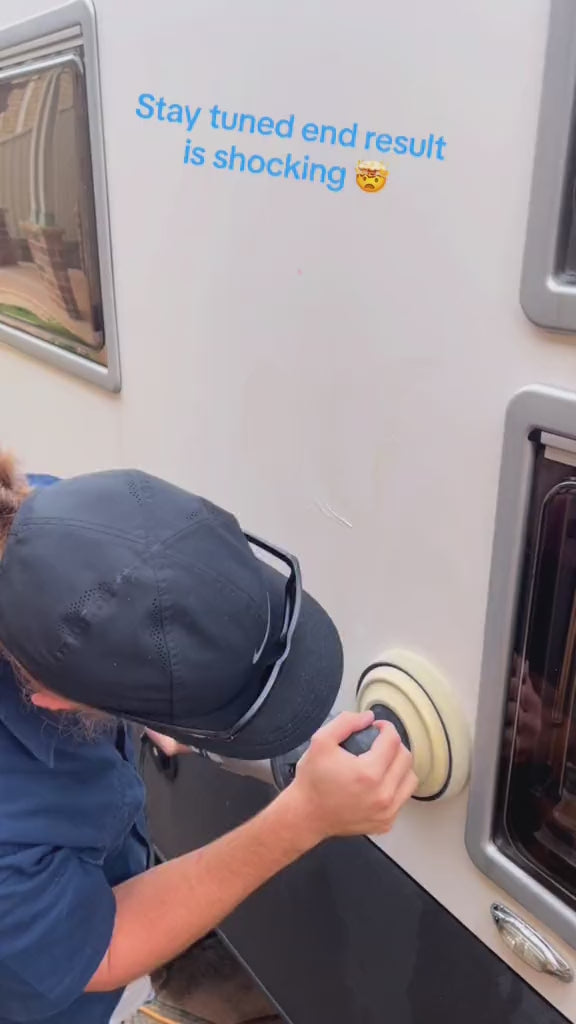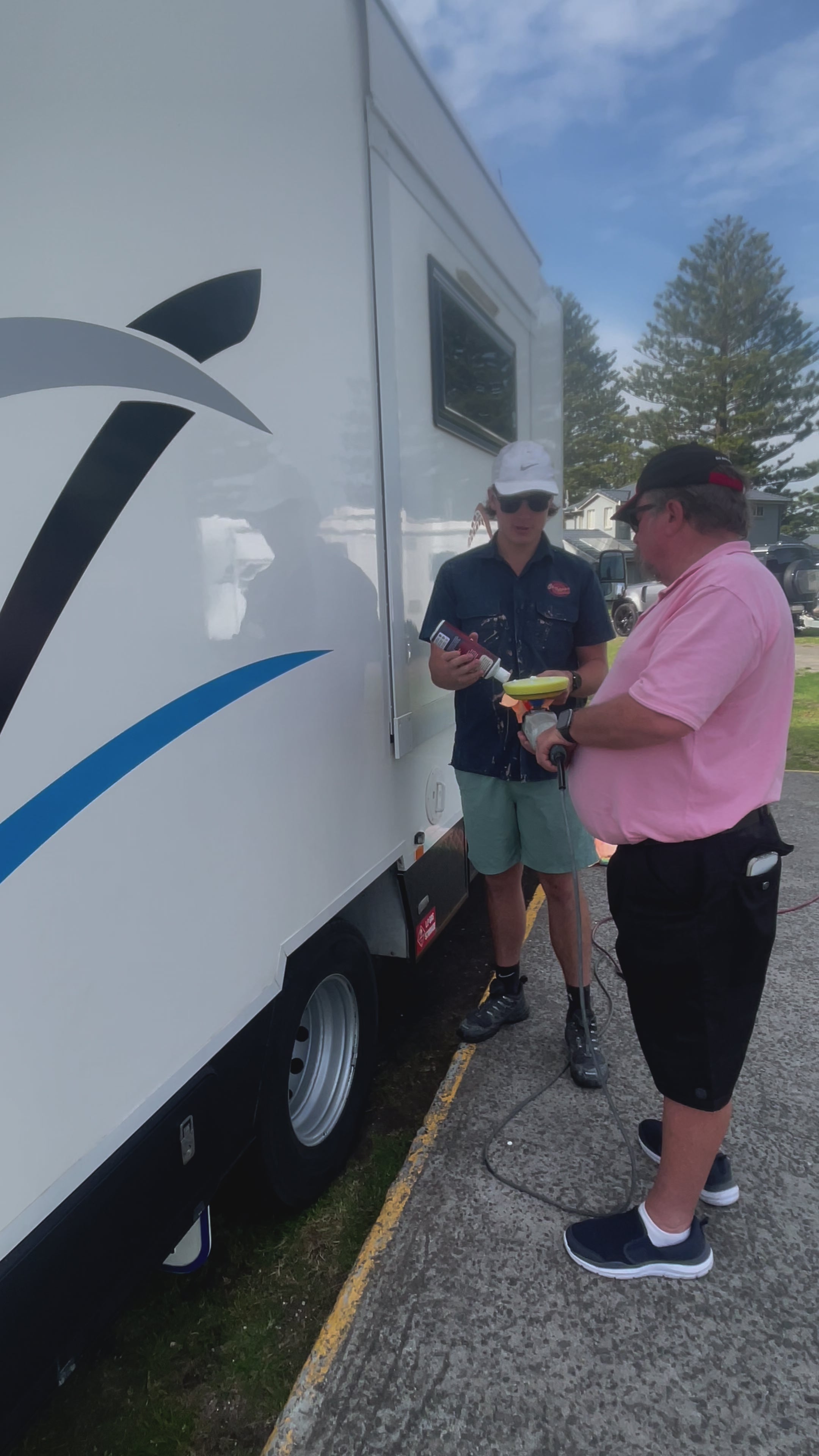Faded, Chalky, or Dull caravans and motorhomes are a common sight when traveling around Australia and yes, more or less you can blame the sun. But is there more to it? Can it be prevented? Can it be affordably repaired?
.
What is Fiberglass Oxidation?
Fiberglass oxidation naturally occurs when the outer layer of your caravan or motorhome's gel coat (protects & enhances appearance) deteriorates due to Australia's various harsh elements. Over time, sunlight, moisture, sea salt, and other pollutants cause oxidation, which results in the loss of that glossy, reflective look we all love.
.
Why Does Oxidation Happen?
As mentioned sunlight, moisture, sea salt, and other pollutants play a role in the oxidation of caravans and motorhomes. Mainly caused by excessive exposure to UV radiation which deteriorates the molecular structure over time, contact with sea salt, bird droppings, and other pollutants speeds up the oxidation process. While consistent upkeep can mitigate oxidation, it remains an inevitable process over time.
.
Why It's Important To Stop Oxidation?
Oxidation is the start of a ruthless mould growth process. Have you ever seen a caravan or motorhome with black spots like the image below:

This is mould growth due to excessive oxidation without intervention. At some stage the gel coat began to crack and moisture was let in underneath the gel coat with nowhere to go. Inevitably, mould began to grow and spread across the entire surface of the caravan.
.
How to Identify Oxidation?
Detecting oxidation is crucial for timely intervention. Oxidation won't slow down, your caravan fiberglass will continuously deteriorate and your gel coat will crack inviting mould to begin growing.
- Dull Appearance: The formerly vibrant, glossy surface appears faded and lackluster.
- Chalky Residue: Running your hand over the hull may leave behind a chalky residue on your fingers.
- Patchy Discoloration: You may observe uneven coloration or areas of discoloration on the gel coat.
- Rough Texture: Oxidized gel coat feels rough due to microscopic cracks on the surface.
.
How to fix Fiberglass Oxidation?
Bringing back that shine and reflection to your caravan or motorhome with a Cut & Polish:
- Cleaning: Wash meticulously to remove all surface dirt, grime, and contaminants. Our 'Ceramic Safe Wash' is perfect for this.
- Cut & Polishing: Once the surface has been washed. Employ our high-quality caravan and motorhome polish to remove oxidation and restore shine. Keep in mind polishing also adds a protective layer to deter future oxidation.
- Protect: To prolong the new look of your beloved caravan or motorhome. We recommend sealing your caravan with a high-quality wax or ceramic coating.
- Maintenance: Establish a regular maintenance routine. As mentioned above contaminants accelerate the oxidation process, therefor the more you remove salt, dirt, and grime from the gel coat the longer the Shien will last.
Learn More about Cut & Polish
.
How to Prevent Fiberglass Oxidation?
Yes it is difficult to entirely stop fiberglass oxidation, however, you can significantly delay the process and preserve your caravan or motorhomes gel coat with these steps:
- Storage: If possible, store your beloved home-on-wheels in shaded areas. Portable, DIY pergolas are a great way of doing this. If not, Ceramic Coating is the next best thing.
- Regular Washing: Wash your caravan or motorhome after each time it travels on the road.
- Ceramic Coating: Ceramic Coating easily the next best thing if you cannot store your caravan or motorhome out of the sun. It is an amazing chemical that can drastically prevent oxidation. It is a hydrophobic, UV shield over the entirety of your Caravan or Motorhome. Ceramic Coating deserves its own blog, read more here.

